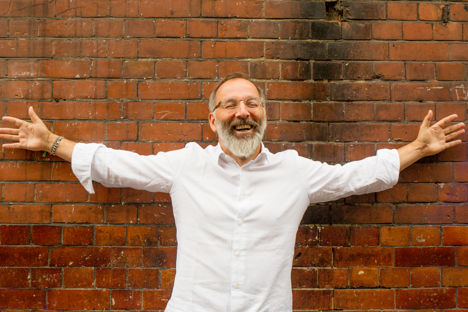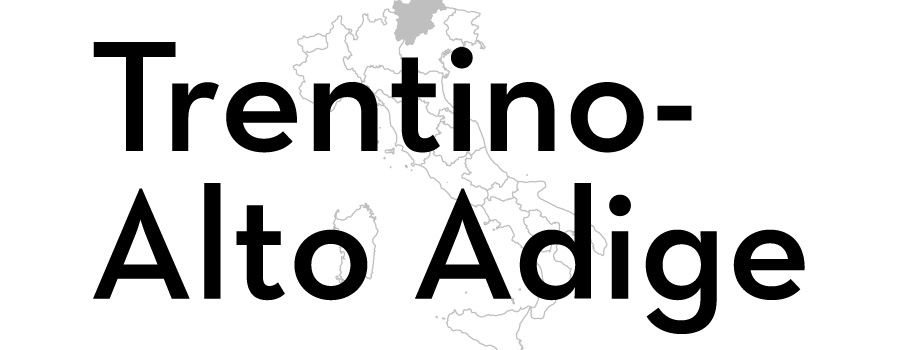
Cook the mountain: talking Tyrol with Norbert Niederkofler
Tom Shingler sits down with the three-Michelin-starred South Tyrolean chef to see how staying true to the area’s traditional way of cooking has changed the way he sees food.
Cook the mountain: talking Tyrol with Norbert Niederkofler
Tom Shingler sits down with the three-Michelin-starred South Tyrolean chef to see how staying true to the area’s traditional way of cooking has changed the way he sees food.
South Tyrol certainly isn’t short of Michelin-starred chefs, but the one that stands out from the crowd is Norbert Niederkofler. He’s done more than anyone to promote the region’s unique ingredients and was one of the first to put the area – normally associated with skiing – on the foodie map.
I caught up with the chef as he arrived in London to cook a one-off meal with Great Italian Chefs and Lavazza at restaurant Bocca di Lupo and showcase his unique approach to food over to the UK. Norbert’s known for using twenty different varieties of locally-grown carrots throughout the year in his cuisine, and it’s this kind of knowledge of ingredients that means he never has to look further than the Dolomites for everything he needs. But it wasn’t always like this; when he first returned to South Tyrol after his travels around the kitchens of the world he drew on his international inspiration.
‘I used to approach dishes thinking globally – taking scallops from Scotland, yuzu from Japan and fingerling potatoes from somewhere else to create a menu – but I soon decided to just use what the Dolomites gave me,’ he says. ‘At first I had trouble finding acidity, but nature always gives you what you need; I found certain wild herbs and leaves that bring a bitter, acidic and peppery flavour to food.’
This approach to food – which Norbert called ‘Cook the Mountain’ – quickly came to define his cooking style. Now, he looks to South Tyrol for absolutely everything, and his dishes have become healthier, cleaner tasting and lighter in the process. ‘I don’t use any olive oil in my cuisine because I think it can overpower other flavours,’ he says. ‘The same goes for salt – we use very little at St Hubertus [Norbert’s restaurant] and usually only at the very end of cooking. The risotto I’m cooking tonight, for instance, is simple – just rice cooked in tomato water with a little butter and some homemade mascarpone. When you start adding things like stock, onions and cheese it become a very rich dish that loses its freshness.’
Beauty in simplicity
Cooking in such an alternative way does mean Norbert has to manage his diners’ expectations, however. ‘We have to educate our guests and let them know the story behind what they’re eating. Some people who come to the restaurant for the first time take a look at the dishes and think they’re too simple. But I think cooking is very similar to design; when designing something, the cleaner and more simple it looks the more difficult it is to make. The same goes for my food.
‘For example, the beetroot gnocchi dish we serve is one of the most popular at St Hubertus,’ continues Norbert. ‘It sounds simple, but the techniques we use are actually very complex. We take a potato-based dough, mix in a beetroot reduction to make it red, then make a horseradish cream which is then made into agar agar pearls and frozen. We wrap the dough around the frozen horseradish and then glaze the gnocchi with more beetroot juice before cooking them. When the diner bites into one, they’re surprised by the melted horseradish inside. The gnocchi are served on a soil – which complements the fact that the pasta is flavoured with root vegetables – made out of breadcrumbs and ice cold beer, which makes it feel and smell like the wet earth found outside.’
While Norbert has huge amounts of passion for the food of the Dolomites, he believes his approach can be adapted to anywhere in the world. ‘If I lived close to the sea I would have done ‘Cook the Sea’. If I lived close to the desert I would have done ‘Cook the Desert’. I have nothing against ingredients like foie gras, olive oil and shellfish – I love eating them – I just don’t see any sense for me to use them in the cooking at my restaurant, when nature gives me everything I need nearby.’
Norbert Niederkofler
Preserving the past
With all this talk of preservation, you might think Norbert is tapping into the latest trend for everything pickled. But he’s fully aware the technique isn’t anything new, and has been practised for thousands of years. ‘Nowadays everybody talks about fermentation but it’s such an old way of preserving and making healthy food,’ he says. ‘When I was in Peru for the first time around nine years ago I saw something that looked like grey stones at a food market. I was told they were freeze dried potatoes, and that it was a very old, traditional product.’ But how on earth did they do it without modern technology?
‘They basically played with nature,’ Norbert explains. ‘When you go up to the Andes it’s very hot in the day and very cold at night. The potatoes are placed under rocks during the day, which heats them up and draws out all the moisture, then at night they are placed on top of the rocks, which freezes them. These days we understand a lot more about food and why certain things happen, but in the past it was a necessity to preserve as much as possible.’
This example of how preservation is a global thing that civilisations of all kinds have relied on in the past is something Norbert has found evidence of time and time again. ‘In South Tyrol we have a very famous cheese made out of whey, which was born out of a necessity to limit waste wherever possible. But a few months ago I was talking to a film crew from Australia that had been working in Bhutan (which is also a mountainous region in the Himalayas) and they said the exact same cheese was made, but using the whey from yak’s milk. There’s a reason why these products exist – to get people through the winter.’



